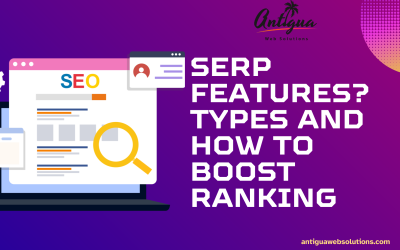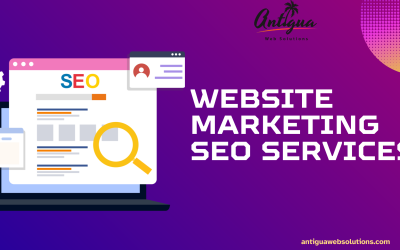As an owner of the business, one of the best things that you’ll be focusing on is getting people to your website. Whether the purpose of your website is to drive them to see you in-store, or you are offering your products online, it is very important to make ensure that your website is both aesthetically appealing as well as SEO friendly. Read more to know about Web Design and SEO works.
The hassle right here is that it’s hard to have one without the alternative. So, in case you were to mention, invest in a web design company to make your business look incredible, your traffic could suffer. This is because of the coding that is put into website design. It is rarely optimized to make it so that your website will bring in the traffic too. Your website also needs to be designed well. SEO and Web Design work together more logically than many people might realize.
Their components mingle and flow together so well that, when executed correctly, your website visitors find it difficult in noticing anything about the design that you have created in the website as they simply start navigating through your website. So, what are those elements where the SEO and Web Design collaborate with each other?
In this comprehensive guide, we will explore the relationship between web design and SEO, how they complement each other, and why businesses must prioritize both in their digital strategy.
What is Web Design?
Web design is the process of creating and organizing the elements on a website, including layout, graphics, content, navigation, and overall visual aesthetics. A well-designed website doesn’t just look attractive; it also serves as the gateway to deliver a seamless user experience (UX). Good web design ensures that visitors can easily navigate the site, find the information they need, and take actions that align with the business goals (e.g., making a purchase, filling out a contact form, etc.).
What is SEO?
SEO stands for Search Engine Optimization, which is the practice of improving a website’s ranking on search engines like Google. The goal of SEO is to make the website more visible to users who are searching for related topics, services, or products. SEO involves a variety of strategies, including on-page SEO (optimizing individual web pages) and off-page SEO (building backlinks, improving domain authority, etc.).
SEO is crucial for helping websites rank higher on search engine result pages (SERPs), thereby increasing organic traffic to the site.
Read more: Reasons to Hire the best SEO Consultant
Why Web Design and SEO Need to Work Together
At first glance, web design and SEO may seem like two separate disciplines with distinct goals. However, they are interconnected, and when they work together, they can amplify each other’s effectiveness. Here’s how:
1. User Experience and SEO Performance
Search engines, especially Google, place a high emphasis on user experience. Websites that offer a smooth, enjoyable user experience are more likely to rank higher. Web design plays a significant role in providing that experience. Elements such as easy navigation, fast load times, mobile responsiveness, and clear calls to action directly impact how users interact with the site.
- Site Speed: Search engines prioritize fast-loading websites. A poorly designed website with large images, inefficient coding, or excessive plugins can slow down page load times, hurting both user experience and SEO performance.
- Mobile Responsiveness: More users access websites via mobile devices than ever before. A responsive website design ensures that users have a seamless experience across all devices, which can positively impact SEO rankings. Google uses mobile-first indexing, meaning that mobile-friendly websites are prioritized in search results.
- User Engagement: Websites with engaging, easy-to-navigate designs have lower bounce rates and higher user engagement, both of which are positive signals for search engines. This leads to better rankings over time.
2. On-Page SEO and Web Design
On-page SEO refers to optimizing elements of a website that are directly under the control of the website owner. Web design plays a key role in implementing effective on-page SEO strategies. Here are some key areas where web design and SEO intersect:
- URL Structure: Clean, SEO-friendly URLs are essential for both user experience and search engine rankings. A well-structured URL gives both users and search engines a clear idea of the page content.
- Heading Tags: Proper use of heading tags (H1, H2, H3, etc.) is important for both SEO and web design. Heading tags help search engines understand the hierarchy of content on the page and also make the page easier to read for users.
- Internal Linking: The way content is organized and linked within a website can improve SEO. Web design plays a role in how links are structured and how they appear on a page, which affects the flow of link equity and the user experience.
- Image Optimization: Visual elements like images and videos are essential to web design, but they must be optimized for SEO as well. Compressing images, adding alt text, and using descriptive filenames are all ways that web design can support SEO efforts.
3. Mobile-Friendliness and SEO Ranking
With the increasing number of mobile users, Google has adopted mobile-first indexing, which means Google primarily uses the mobile version of a website for ranking and indexing. A website that’s not mobile-friendly will rank lower in search results. Therefore, web design and SEO must prioritize mobile responsiveness to ensure a seamless experience for all users and improve SEO rankings.
- Responsive Design: A responsive web design automatically adjusts to fit different screen sizes. This ensures that your website works well on mobile phones, tablets, and desktops, boosting both user experience and SEO rankings.
4. Content and Visual Appeal
Content is king when it comes to SEO. However, content alone isn’t enough. It needs to be presented in a visually appealing and user-friendly way. Web design can enhance content by breaking it up into digestible sections, using visually engaging images, and ensuring that important information is easily accessible.
A good web design also improves readability through proper typography, font size, and spacing. When visitors can easily read and engage with the content, they are more likely to stay on the site longer, reducing the bounce rate and improving SEO performance.
5. Search Engine Crawling and Indexing
For a website to rank well on search engines, it needs to be crawlable and indexable. Web design impacts how search engine crawlers (bots) can navigate a website. If your website design is cluttered with broken links, slow loading times, or difficult-to-read content, search engine crawlers may struggle to index the site, leading to poor rankings.
- XML Sitemaps: Web design often includes the integration of XML sitemaps, which help search engines better understand the website structure and index content accordingly.
- Clean Code: Clean and efficient code is essential for search engines to easily crawl and index a website. A well-coded website ensures that there are no unnecessary obstacles for search engines to crawl through.
Define a common goal of Web Design and SEO works
The goal for the SEO team is to help a website show up better in search engine results pages (SERPs). Whereas the goal for the Web Design team is to develop an attractive, usable website for their clients.
These are great goals, but there is a disconnect between these two and the potential to fall short when both teams work autonomously. Both goals are easier to reach when the SEO and Web Design teams work together. Ideally, these goals should be in line with your overall business goals, such as generating higher revenue in your business or moving into a new market.
If such a goal does not exist, identify a goal both the teams are trying to meet, such as increased conversions, and also make sure that there is lots of communication between your teams.
Design on an SEO-friendly platform
Some design platforms help you create a beautiful website, but not one that works well with search engines. If your website has lots of flash animations then the Search Engines won’t be able to read and process most of your content since Search Engines simply cannot read the Flash.
One way to eliminate most SEO design challenges is to employ responsive web design on your website. You will only need one URL and set of codes to create a website that works across multiple devices. This, in turn, ensures your website and content appear in more searches since the search engines now prefer websites with responsive web design. Web Design and SEO works are helpful to increase traffic.
Best Practices for Web Design and SEO Integration
To ensure that both web design and SEO are working harmoniously, here are some best practices:
- Mobile Optimization: As discussed earlier, ensure that your website is fully optimized for mobile devices to meet both user and SEO requirements.
- Focus on Site Speed: Optimize images, minimize code, and leverage caching to improve site speed.
- Optimize for User Intent: Design your website with user intent in mind, ensuring that your content answers users’ questions and needs.
- SEO-Friendly Content: Regularly update your website with relevant, keyword-rich content that aligns with your target audience’s search queries.
- Clear Navigation: Simplify the navigation structure to make it easier for both users and search engines to find and navigate your website.
Keep the design clean and simple with Web Design and SEO works
One of the major factors that the search engines consider when ranking a website is usability and design which play a key role in it. A website that looks complicated won’t keep people around or generate conversions. But a clean and simple design will do just the opposite. So in order to generate conversions one must make sure that the page has ample blank space, attractive graphics, and a brief paragraph of text. Place calls to action in prominent areas like the end of a page to compel users to take a certain action on your website such as buying a product or signing up for the newsletter. An attractive appearance and seamless navigation will increase the conversions and time on your website, both of which will result in increased rankings over time.
Optimize every element
Web designers do not just use text for websites but they also use lots of different elements such as photos, videos, graphics, headers, footers, and other elements that all play into successful web design. You can optimize each of these elements for the search engines. Have your SEO teamwork with your web designers so as to identify the optimizable elements of each web page and optimize them appropriately.
How to Choose a Web Design and SEO Agency
Choosing a reputable agency that specializes in both web design and SEO is crucial for achieving long-term success. When evaluating agencies, consider the following:
- Experience and Expertise: Look for agencies with a proven track record of delivering successful web design and SEO projects.
- Transparency: Choose an agency that offers clear communication and provides regular updates on the progress of your project.
- Portfolio: Review the agency’s portfolio to assess the quality of their web design and SEO services.
- Custom Solutions: Ensure the agency offers customized strategies tailored to your specific business goals and needs.
Marketing functions have to work together so as to create one cohesive strategy. Although SEO and Web Design serve two different purposes, they perform better when implemented in a more integrated fashion. Don’t just develop SEO and Web Design strategies but design a strategy that incorporates both these factors.
Conclusion
In today’s competitive online landscape, web design and SEO must work together to ensure a seamless, user-friendly experience that drives organic traffic and improves search rankings. The intersection of these two fields influences everything from site speed and mobile optimization to content presentation and search engine crawlability.
By prioritizing both web design and SEO, businesses can improve their online visibility, enhance user experience, and ultimately drive more conversions. Whether you’re building a new website or optimizing an existing one, focusing on the synergy between web design and SEO is the key to sustained success in the digital world.
At Antigua Web Solutions, we specialize in crafting websites that not only look great but are also optimized for search engines. Our integrated approach ensures that your business website is both visually appealing and SEO-friendly, helping you rank higher and attract more potential customers.
Contact us today to learn more about how we can help you improve your website’s performance and drive business growth through effective web design and SEO strategies.





